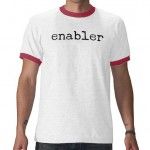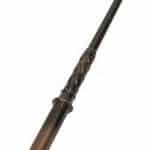
35 U.S.C. § 112 is one of those unsexy parts of the patent law that describes the requirements of a patent application. While § 101 (patentable subject matter, think the recent cases regarding the patentability of software) and § 103 (dealing with the non-obviousness requirement, seeing recent Supreme Court action) get the top billing, patent attorneys are making sure to deal with all of the other requirements. One of those is the so-called Enablement Requirement. It is a part of the patent law that seems only natural and obvious, and unlikely to ever be much of a problem, but as a patent application navigates its course through prosecution, it might be the barest of disclosures that distinguishes the claimed invention from the prior art, and at the point the Enablement Requirement may rear its head.
In the first paragraph of § 112, the law states:
The specification shall contain a written description of the invention, and of the manner and process of making and using it, in such full, clear, concise, and exact terms as to enable any person skilled in the art to which it pertains, or with which it is most nearly connected, to make and use the same, and shall set forth the best mode contemplated by the inventor or joint inventor of carrying out the invention.
Therefore, in the written description of the application, if you want to include a certain feature, element, or step of the invention, you need to provide enough detail for a PHOSITA (my readers will sound like patent attorneys yet) to be able to “make and use” the invention. An ambiguous requirement, to be sure. A great number of ambiguities left to be resolved are baked into the analysis, which are neatly outlined in an eponymous factor list from the case In re Wands. Those factors enable the Examiner to determine if “undue experimentation” would be required to practice (read: make and use) the invention. The Wands factors include:
- the quantity of experimentation necessary;
- the amount of direction or guidance presented;
- the presence or absence of working examples;
- the nature of the invention;
- the state of the prior art;
- the relative skill in the art;
- the predictability of unpredictability of the art; and
- the breadth of the claims.
An extensive factor test, to be sure. In essence, the factor test considers how much information the written description provides regarding the claimed aspect of the invention, the overall state of the art and the level of knowledge of a PHOSITA, and the breadth of the claims.
With so many opportunities to find support for a claimed element, it may seem unlikely that satisfying this requirement will offer much of a roadblock on the way to patentability, and that is usually the case. However, in some applications, when a previously undiscovered piece of prior art reads closely onto an invention, it may very well be the off-handedly included aspect of the invention, that is included without much detail, that may serve as the basis for differentiating your invention from the prior art. As such, it is incumbent on patent drafters to make sure to provide at least enough detail to satisfy this requirement, and to do so for each and every potentially claimable aspect of the invention. One never knows where the fertile ground may ultimately lie.
Another quandary that can arise when handling an Enablement Requirement rejection is arguing that either the state of the art, the level of knowledge of a PHOSITA, or the predictability of the art can be a double-edged sword, providing the Examiner with the opportunity to turn your argument over Enablement into an obviousness rejection. As such, it is much preferable to have disclosure in the written description to rely on in overcoming an Enablement Requirement rejection.
If you would like to learn more about patents and the patent process, please follow me on Twitter and connect with me on Facebook and LinkedIn.



